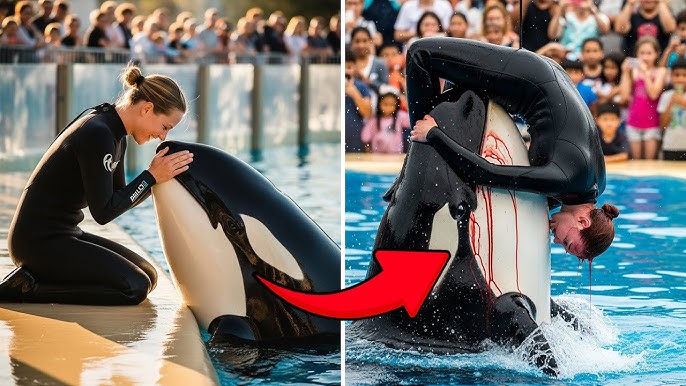It started as a calm, golden afternoon off the coast of Monterey Bay. Tourists lined the deck of the Ocean Spirit, a small whale-watching vessel, their cameras ready for glimpses of playful dolphins or migrating humpback whales. But what unfolded in the following minutes left the crew and passengers in stunned silence—a sighting that some now refer to as the first confirmed appearance of a “killer dolphin.”
At first, the animal seemed like any other bottlenose dolphin, cutting through the water with elegant speed. It leapt high into the air, sunlight glinting off its slick gray skin, drawing excited gasps from the crowd. But as the Ocean Spirit slowed to allow a closer look, the dolphin’s behavior shifted. Instead of approaching with curiosity, it began circling a group of sea lions resting on a kelp bed. Within seconds, the passengers realized this was no ordinary feeding pattern.
The dolphin darted in and out, using bursts of speed to scatter the sea lions, isolating a young pup from the group. Then came the shocking moment: the dolphin struck with the precision of a predator, ramming the pup with enough force to send it spinning through the water. Crew members, experienced in marine life observation, whispered urgently among themselves. Dolphins are known for aggressive play and, in rare cases, violent behavior, but this attack was methodical—almost strategic.
The passengers watched as the dolphin continued its assault, ignoring the cries of the other sea lions. The pup didn’t survive the encounter. The predator then performed a series of rapid, almost triumphant leaps before vanishing beneath the waves. For several moments, no one spoke. The sea was calm again, but the image of the attack was burned into everyone’s mind.
Later that evening, marine biologist Dr. Elaine Morris analyzed the crew’s footage. “This isn’t unprecedented,” she explained, “but it’s rare and unsettling. Dolphins are apex predators in their own right, and while they mostly hunt fish, they have been observed killing other marine mammals—sometimes for food, sometimes for reasons we don’t fully understand.”
The sighting has sparked debates among scientists about the possible emergence of aggressive, predatory behaviors in certain dolphin populations. Some speculate it could be a response to dwindling food sources, changes in migration patterns, or even learned behavior passed through pods.
For those aboard the Ocean Spirit, the event was unforgettable—a chilling reminder that nature’s most charismatic creatures can also be its most lethal.



